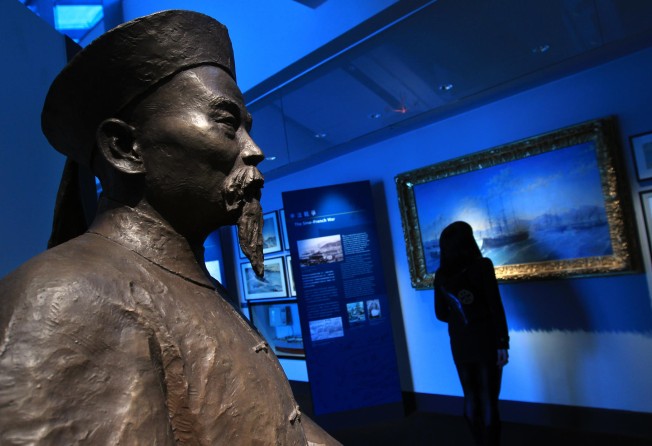See the 'Barbarian Suppressing and Pacifying General'

There is a new attraction on the Central waterfront. No, it's not another shopping mall, bar or restaurant. We are referring to the Hong Kong Maritime Museum, which opened at its new location at Central's Pier 8 last month, after six years at Murray House in Stanley.
In a rare cultural departure, Lai See was recently shown round. This is clearly a different museum from its predecessor. It's much bigger and for anyone who has even a passing interest in Hong Kong it is a must-see. Indeed, it is probably Hong Kong's best museum. There's a lot to see, it's very accessible and is enhanced by modern technology. As the museum directory points out, "the museum's galleries use fine art, ceramics, ship models, interactive displays and 21st-century technologies to tell its story". The main aim of the museum is to "provide the people of Hong Kong with a first-class museum that reflects its rich maritime past and its future."
It also deals with the mainland's seafaring history, with details of China's first maritime modernisation under Li Hongzhang in the 19th century. The many artefacts include the impressive General Cannon, a Chinese cannon captured by British forces during one of the opening battles of the First Opium War. Research is also carried out at the museum and one project involves deciphering the markings on the cannon. Some have already been translated, including pingyi jingguan jiangjun, or "Barbarian Suppressing and Pacifying General", which is a type of Qing dynasty cannon.
Perhaps the most significant artifact is the Qing Scroll. This is 18 metres long and almost 200 years old and tells the story of how the pirates of the South China Sea were subdued. It has been cleverly digitised, enabling visitors to get a closer look at the detail of the scroll and the story it tells. Government-run museums - such as the Hong Kong Museum of History - should look and learn.
Give us a sign
One of the curiosities of the Maritime Museum is that when approaching it from Central, there are no signs indicating its location until you arrive at the Central piers. People have to know where it is before they get to it and then see the signs. Hong Kong drivers have long been familiar with this approach to signage. By the time you see the sign it is too late to respond, unless you already know where you are going. The museum has been trying to rectify this problem with the government for a number of months. Unsurprisingly this relatively simple task has been turned into one of immense complexity since it involves four or five government departments, none of which can make the final decision. The museum is likewise awaiting a government decision on where it can locate the 36-tonne anchor it was given by the Norwegian government. The anchor is from the ULCC supertanker, which had various names and owners, but was known as Seawise Giant when owned by OOCL, and was at one time the longest and largest ship in the world.
The price of plates
Shanghai car licence plate costs are soaring despite government efforts to cool the market. At an auction on Saturday, China Daily reports, people stumped up more than 90,000 yuan (HK$111,230) for a licence plate, the ninth consecutive month that prices have hit new highs. The government has restricted the number of new plates to 9,000 a month. Unsurprisingly, given the strong demand for cars but regulated supply, the soaring prices have attracted speculators. Shanghai deputy mayor Jiang Ping is determined to cool prices and says he will introduce new measures. He sounds like John Tsang talking about property prices.
Special situation
There have been a number of stories over the past few years about how bad banking is for your health. It can make you stressed and fat, cause drug addiction and generally undermine one's quality of life. Reuters has a story about a 26-year-old analyst with the Special Situations Group at Goldman Sachs who grew to a whopping 400 pounds, or 181 kilograms, and had a waistline of 62 inches, or 157 centimetres. He is leaving the industry having slimmed down to 195 pounds and is setting up a chain of gyms in the US for overweight people. He now wears a bracelet that buzzes if he's sedentary for more than 30 minutes.